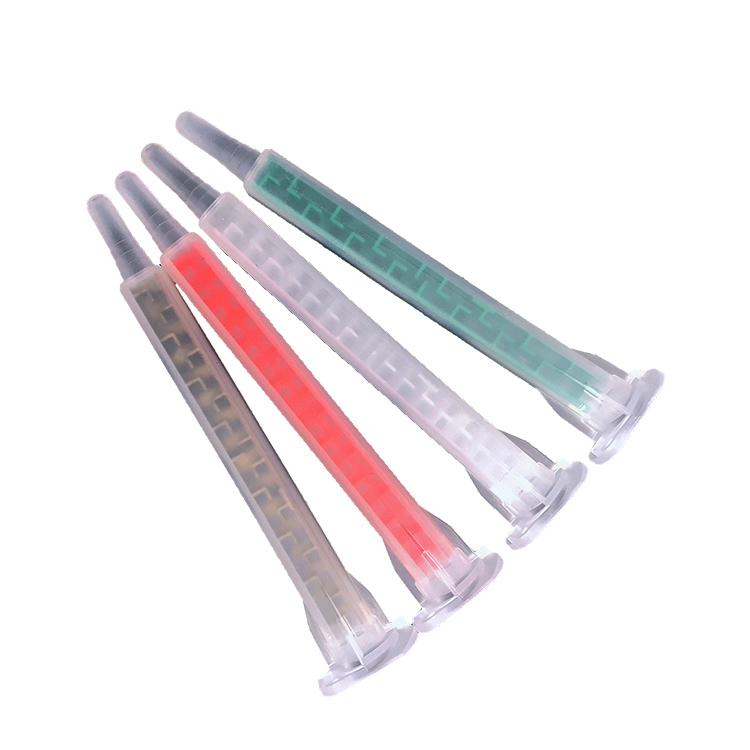Polyurethane adhesives are versatile and widely used in various industries due to their exceptional bonding properties. To achieve optimal results, it is crucial to ensure thorough and consistent mixing of the adhesive components. One effective method for achieving efficient and reliable mixing is through the use of plastic mixing nozzles. In this article, we will explore the significance of plastic mixing nozzles for polyurethane adhesives and compare them to other mixing techniques. We will also provide tips for maximizing the effectiveness of plastic mixing nozzles to achieve superior bonding performance.
Introducing Polyurethane Adhesives:
Polyurethane adhesives are two-component systems consisting of a polyol component and an isocyanate component. When these components are mixed together, a chemical reaction occurs, leading to the formation of a strong bond. Polyurethane adhesives are known for their versatility, flexibility, and excellent adhesion to various substrates, making them suitable for a wide range of applications.
How to Mix Polyurethane Adhesives:
When it comes to mixing polyurethane adhesives, several methods can be employed. Let’s explore these methods, focusing on the advantages, disadvantages, and techniques associated with each.
-
Manual Mix:
The manual mixing method involves combining the polyol and isocyanate components manually using a spatula or similar tool. While this method is simple and cost-effective, it may not provide consistent mixing, leading to variations in adhesive properties. To manually mix polyurethane adhesives, follow these steps:
- Measure the required amounts of polyol and isocyanate.
- Place them in a clean and suitable mixing container.
- Thoroughly mix the components together using a spatula, ensuring even distribution.
- Continue mixing until a homogeneous mixture is achieved.
-
Mixing Paddle:
Using a mixing paddle, typically attached to a drill, is another method for mixing polyurethane adhesives. This technique offers improved mixing consistency compared to manual mixing. However, it may introduce air bubbles and requires proper cleaning of the paddle between applications. Follow these steps to mix polyurethane adhesives with a mixing paddle:
- Measure the required amounts of polyol and isocyanate.
- Place them in a clean and suitable mixing container.
- Attach the mixing paddle to a drill and immerse it in the adhesive mixture.
- Run the drill at a low speed, moving the mixing paddle around to ensure thorough mixing.
- Continue mixing until a uniform consistency is achieved, taking care to avoid introducing air bubbles.
-
Plastic Mixing Nozzle:

Square Plastic Mixing Nozzle Plastic mixing nozzles provide a highly effective and efficient method for mixing polyurethane adhesives. These nozzles feature internal static mixing elements that create a turbulent flow, ensuring thorough blending of the polyol and isocyanate components. Plastic mixing nozzles offer precise control over the mixing process, resulting in consistent adhesive properties. To mix polyurethane adhesives using a plastic mixing nozzle, follow these steps:
- Attach the plastic mixing nozzle to the dual cartridge containing the polyol and isocyanate components.
- Dispense a small amount of adhesive to purge any air from the nozzle.
- Apply consistent pressure to the dual cartridge, dispensing the adhesive through the mixing nozzle.
- Move the nozzle in a sweeping motion, applying the adhesive to the desired area.
- Continue dispensing until the required amount of adhesive is applied, ensuring uniform coverage.
Tips for Maximizing Mixing Efficiency:
To maximize the efficiency and effectiveness of plastic mixing nozzles for polyurethane adhesives, consider the following tips:
- Ensure the dual cartridge and mixing nozzle are properly attached and secured.
- Use a suitable dispensing tool that provides consistent pressure for optimal flow.
- Store the adhesive components according to the manufacturer’s instructions to maintain their quality.
- Use fresh mixing nozzles for each application to avoid potential cross-contamination or compromised mixing efficiency.
- Follow the recommended mixing ratios provided by the adhesive manufacturer to achieve the desired adhesive properties.
Conclusion:
Plastic mixing nozzles offer a superior mixing solution for polyurethane adhesives, ensuring consistent and reliable bonding performance. Compared to manual mixing or using a mixing paddle, plastic mixing nozzles provide precise control, efficient blending, and eliminate the risk of introducing air bubbles. By following the proper techniques and tips, you can maximize the efficiency of plastic mixing nozzles and achieve optimal results in your bonding applications. Embrace the advantages of plastic mixing nozzles to unlock the full potential of polyurethane adhesives for a wide range of industrial and commercial projects.
